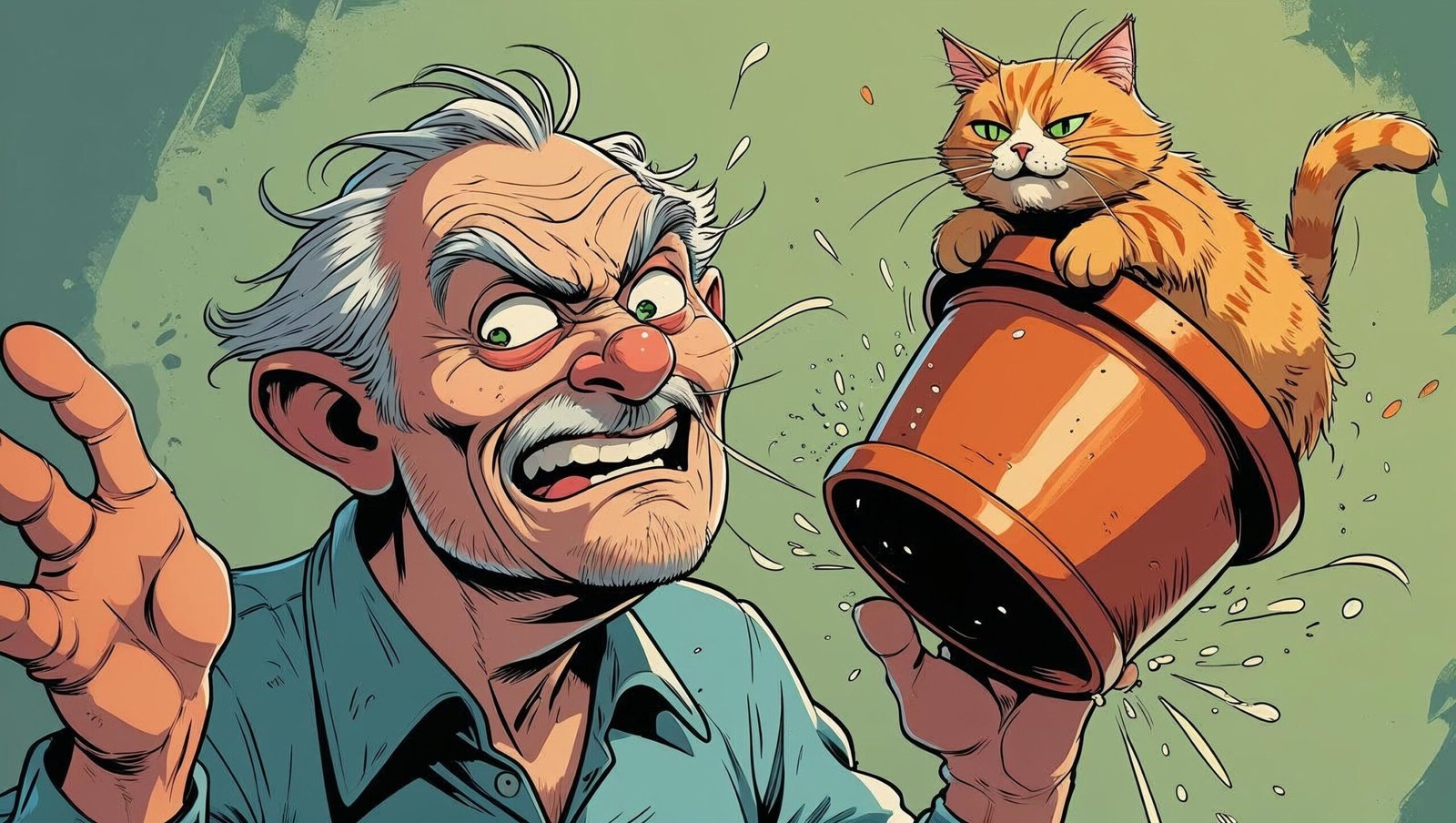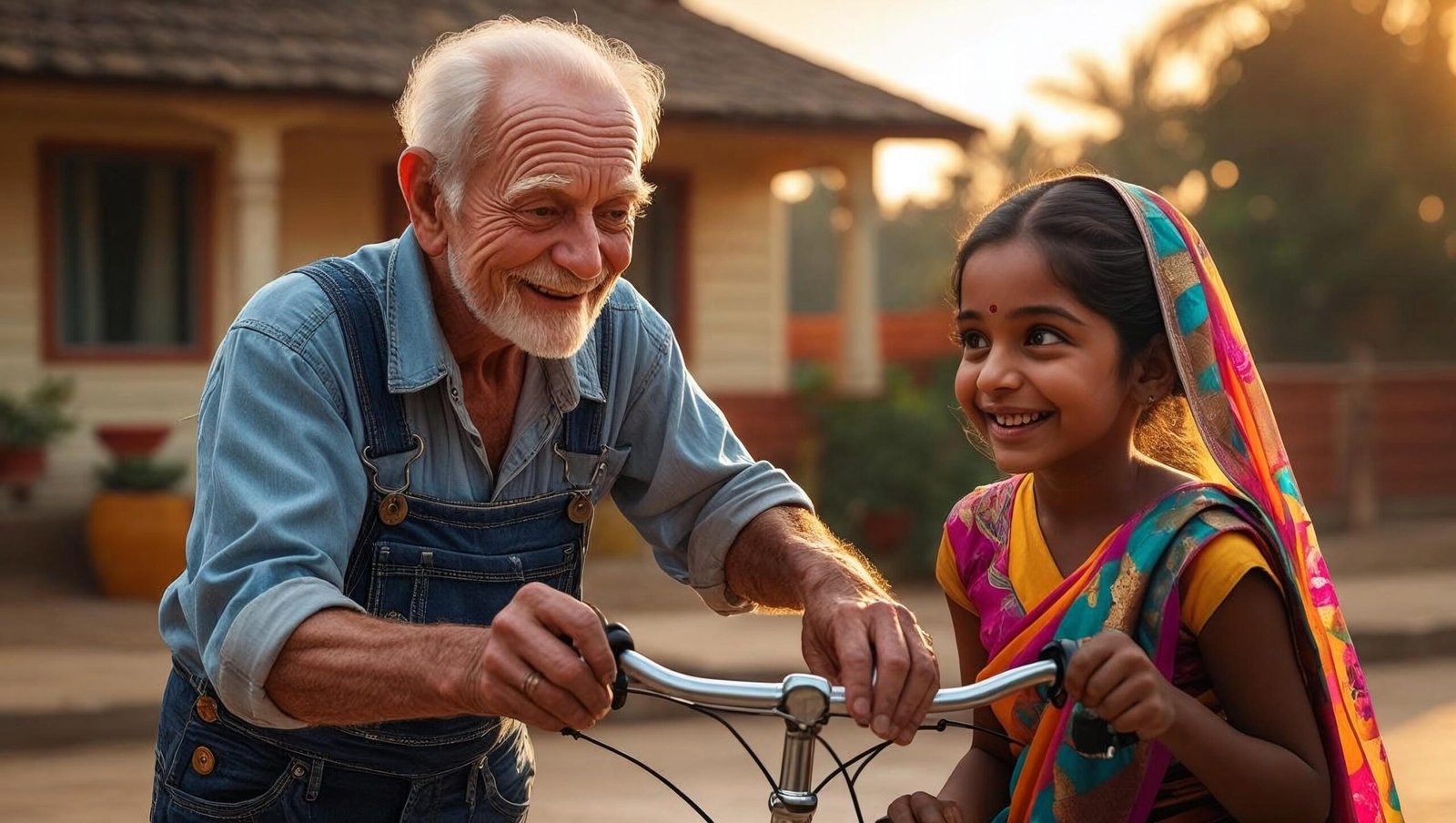Profound Lessons from A Man Called Ove – A Heartfelt Book Review
Introduction
In the realm of contemporary literature, few novels have captured the intricate dance between melancholy and mirth as adeptly as Fredrik Backman’s A Man Called Ove. Set against the serene backdrop of a Swedish suburb, this narrative unfolds the life of Ove, a man ensnared in routines and haunted by loss. Through a tapestry woven with threads of humor, sorrow, and unexpected camaraderie, Backman invites readers to explore the depths of human resilience and the redemptive power of community. A Man Called Ove is more than just a story—it’s a powerful reflection on the healing strength of connection, and the way grief shapes a soul.

Synopsis
Ove, a 59-year-old widower, epitomizes the archetype of the curmudgeonly neighbor. His days are marked by strict routines, disdain for modernity, and a palpable sense of grief following the death of his beloved wife, Sonja. Intent on ending his life, Ove’s plans are continually thwarted by the inadvertent intrusions of his new neighbors: Parvaneh, a spirited Iranian woman; her clumsy husband, Patrick; and their two daughters. As Ove becomes entangled in their lives, along with other community members, he embarks on an unintended journey of rediscovery, confronting his past and redefining his future.
The narrative, while seemingly simple, is layered with emotional complexity. Backman crafts each event with intention, subtly building the emotional arc of Ove’s character. From confrontations with the local council to late-night cat rescues, each subplot contributes to Ove’s transformation.
Character Analysis
Ove
At first glance, Ove appears as a stereotypical grump, resistant to change and quick to judge. However, as the narrative delves deeper, layers of his character are unveiled, revealing a man shaped by profound love, devastating loss, and an unwavering moral compass. His interactions, though brusque, are underscored by a deep-seated sense of duty and care. Ove is principled to a fault, and though his judgments may seem harsh, they are rooted in a deep belief in justice and fairness.
The depth of Ove’s emotional journey is what gives A Man Called Ove its soul. Readers grow with Ove—initially judging him, then understanding him, and finally embracing him.
Parvaneh
Parvaneh serves as the catalyst for Ove’s transformation. Her persistence, empathy, and vivacious spirit challenge Ove’s rigid worldview, drawing him out of his self-imposed isolation and into the embrace of community. She is more than a supporting character; she is a metaphor for change, diversity, and resilience.
Sonja
Though deceased, Sonja’s presence permeates the novel. Her warmth, optimism, and love for Ove are evident through his memories, highlighting the profound impact she had on his life and the void her absence has created. Through Sonja, we see a softer Ove—a man capable of deep love, loyalty, and compassion. Her memory becomes the thread that connects Ove’s past to his emerging present.
Themes
The Complexity of Grief
Backman presents grief not as a singular emotion but as a multifaceted experience. Ove’s mourning manifests in anger, withdrawal, and a yearning for the past, illustrating the varied ways individuals process loss. A Man Called Ove gently portrays how grief can isolate yet also connect, as shared sorrow becomes a means of healing.
The Redemptive Power of Community
The novel underscores the idea that healing often emerges through connections with others. Ove’s interactions with his neighbors, though initially unwelcome, become the lifelines that pull him from the depths of despair. Each neighbor contributes a piece to Ove’s puzzle, nudging him towards acceptance and belonging.
Resistance and Acceptance of Change
Ove’s disdain for modern advancements and bureaucratic systems symbolizes a broader struggle between tradition and progress. His eventual adaptation signifies the necessity of embracing change to find peace and purpose. The theme resonates universally, making A Man Called Ove a timeless reflection on the human need for growth.
Aging and Relevance
Ove’s internal conflict often centers around his perceived uselessness in a modern world. His identity was rooted in his role as a husband, an engineer, and a community man. Losing these, he struggles with relevance. The novel gently confronts ageism, showing that one’s value doesn’t diminish with age.
Narrative Structure and Style
Backman’s storytelling is characterized by a non-linear narrative, interspersing present events with flashbacks that provide context to Ove’s current demeanor. This structure allows readers to gradually piece together the mosaic of Ove’s life, fostering empathy and understanding. The prose balances humor and poignancy, with similes and metaphors that, while sometimes unconventional, add a unique flavor to the narrative.
The dialogue in A Man Called Ove is especially commendable. It mirrors real-life conversations, rich in subtext and tone. Humor is often dry, reflecting the Nordic flavor of storytelling, and it’s used not to mask sorrow but to coexist with it.

Symbolism
The Saab
Ove’s unwavering loyalty to his Saab car mirrors his adherence to tradition and resistance to change. The vehicle becomes a symbol of his identity and the life he once shared with Sonja. His arguments with neighbors over car brands are not just comic relief—they symbolize his struggle to hold onto something familiar.
The Stray Cat
Initially perceived as a nuisance, the stray cat that Ove begrudgingly adopts symbolizes the unexpected companionship and warmth that re-enter his life, challenging his solitary existence. The cat is quiet, persistent, and nonjudgmental—much like the kind of support Ove needs.
Cultural Context and Social Commentary
A Man Called Ove is steeped in Swedish culture—from its neighborhood dynamics to its subtle commentary on bureaucracy. The novel touches upon issues such as immigration, societal indifference toward the elderly, and the red tape of modern institutions. Through Ove’s resistance, Backman critiques systems that prioritize policy over people.
Parvaneh’s Iranian heritage introduces a refreshing multicultural dimension. Her integration into the community, despite initial friction, shows that humanity transcends cultural divides.
Emotional Tone and Reader Experience
Reading A Man Called Ove is akin to experiencing a symphony of emotions. Laughter is followed by tears, irritation turns into affection, and cynicism gradually gives way to hope. Backman masterfully paces these emotional transitions, making the reader feel connected to Ove in a deeply personal way.
The novel doesn’t force sentimentality. Instead, it allows readers to arrive at their emotions through observation, nuance, and empathy. That is why A Man Called Ove continues to resonate with readers globally.
Reception and Impact
Upon its release, A Man Called Ove garnered widespread acclaim for its heartfelt portrayal of an individual’s journey from isolation to connection. Readers have lauded its ability to evoke a spectrum of emotions, from laughter to tears. The novel’s success led to adaptations in film and theater, further cementing its place in contemporary literature.
Its success is also due to the universality of its message. Everyone has known an “Ove” at some point. By giving him depth and dignity, Backman compels us to look again—to see beyond the grumpiness, into the pain, love, and humanity within.

The Appeal of Ove’s Simplicity
What makes A Man Called Ove so memorable is the character’s straightforwardness. He sees the world in black and white, with clear notions of right and wrong. In today’s morally complex society, Ove’s unwavering values feel refreshing and sincere. His simplicity is his strength, and readers are drawn to his integrity even when it makes him unpopular.
Humor in the Midst of Tragedy
Despite its heavy themes, A Man Called Ove is surprisingly funny. Fredrik Backman masterfully balances grief with humor, allowing readers to breathe and reflect. Ove’s deadpan remarks and the absurdity of his situations lighten the narrative without diminishing its emotional depth. The humor is organic, making the characters feel authentic.
Ove’s Relationship with Rules
Rules are Ove’s compass. They guide him through a world that often feels chaotic. His commitment to principles like parking regulations or tool maintenance may seem trivial, but they reveal a man striving for order. A Man Called Ove uses these quirks to explore deeper themes of structure, purpose, and identity.
The Role of Flashbacks
The flashback structure in A Man Called Ove is crucial. It allows readers to understand the pivotal moments that shaped Ove’s worldview. We see a loving but difficult childhood, a powerful romance, and immense personal losses. These glimpses into his past foster empathy and elevate the narrative from a simple story to a life journey.

Women in Ove’s Life
Women play pivotal roles in Ove’s transformation. Sonja, his late wife, offers warmth and vibrancy that contrast with Ove’s rigidity. Parvaneh brings new energy into his life, pushing him beyond his comfort zone. Through them, A Man Called Ove emphasizes how women inspire growth and healing in a man hardened by grief.
Father Figures and Mentorship
Though not central to the plot, Ove’s relationship with his father shapes his value system. His father’s teachings—especially about work ethic and loyalty—echo throughout the novel. A Man Called Ove showcases how parental guidance continues to influence us long after our parents are gone, forming the backbone of our beliefs.
The Neighborhood as a Microcosm
The neighborhood in A Man Called Ove represents society in miniature. Every character—from Rune, the estranged friend, to Jimmy, the friendly neighbor—symbolizes a facet of human experience. Ove’s gradual acceptance of these individuals mirrors how real-world community building happens: slowly, through empathy and shared experiences.
Mental Health Portrayal
A Man Called Ove doesn’t shy away from discussing mental health. Ove’s depression and suicidal thoughts are addressed with raw honesty. Yet, rather than portraying him as weak, the novel shows strength in his vulnerability. The story normalizes seeking purpose and connection as remedies for emotional pain.
Ove as an Unlikely Hero
Ove doesn’t wear a cape or seek recognition, yet his small acts of kindness make a monumental impact. Whether fixing a radiator or driving someone to the hospital, his deeds define heroism in a quiet, profound way. A Man Called Ove reminds us that real heroes are often the people we overlook.
The Healing Power of Purpose
Purpose becomes the cornerstone of Ove’s survival. Initially bent on ending his life, he finds reasons to stay each time someone needs him. This shift—from isolation to usefulness—is transformative. A Man Called Ove teaches that even a single task, a call for help, or a person in need can become our reason to live.
Language and Translation Impact
Originally written in Swedish, A Man Called Ove maintains its emotional resonance in English thanks to a skillful translation. The translator captures Ove’s voice without losing cultural nuance. This contributes significantly to the book’s international success, making the story of A Man Called Ove feel both uniquely Scandinavian and universally human.
Timelessness of the Narrative
Despite being published over a decade ago, the story of A Man Called Ove remains relevant. Themes like loneliness, societal alienation, and intergenerational conflict transcend cultural and temporal boundaries. As modern life grows more fast-paced, the message of slowing down and connecting grows more urgent.
Literary Comparisons
Many compare A Man Called Ove to Up, the Pixar film about a widowed man who rediscovers life through unexpected friendships. Both narratives explore grief, aging, and second chances. These similarities highlight how A Man Called Ove fits into a broader tradition of emotionally redemptive storytelling.
The Impact of Friendship in A Man Called Ove
Friendship is a core theme in A Man Called Ove. Though Ove starts off as a solitary figure, his interactions with neighbors show how companionship can heal wounds. Through the warmth of new friends, Ove learns to soften his edges. A Man Called Ove beautifully illustrates that even the most reluctant individuals can find solace and strength in genuine human connection.
The Role of Humor in A Man Called Ove
Humor in A Man Called Ove is not just comic relief; it’s a vital narrative tool. Ove’s bluntness and dry wit offer readers moments of levity amid sorrow. This blend of humor and tragedy makes the story relatable and engaging. Fredrik Backman’s clever use of humor in A Man Called Ove enriches the story’s emotional depth and keeps readers emotionally invested.
Ove’s Personal Growth Throughout the Novel
One of the most compelling aspects of A Man Called Ove is the protagonist’s transformation. From a man defined by loss and strict principles, Ove gradually becomes more open and compassionate. This evolution is gradual but profound. A Man Called Ove shows that personal growth is possible at any stage in life, especially when one embraces vulnerability and human connection.
The Symbolism of Ove’s Cat in the Story
The cat in A Man Called Ove serves as a symbolic representation of companionship and unconditional acceptance. Initially reluctant to care for the cat, Ove’s growing affection reflects his softening heart. This small but significant relationship mirrors the larger themes of trust and healing in A Man Called Ove, reinforcing the power of simple acts of kindness.
Ove’s Influence on Community Spirit
A Man Called Ove demonstrates how one individual’s actions can inspire a community. Ove’s initially gruff demeanor eventually turns into an unexpected source of support, highlighting how even the most reluctant can foster collective goodwill.
The Role of Pets in Ove’s Life
Pets play a subtle but meaningful role in A Man Called Ove. Ove’s relationship with his cat symbolizes his growing ability to love and care again, reflecting the healing power of companionship.
Ove’s Moral Code and Integrity
Integrity is central to Ove’s character in A Man Called Ove. His strict adherence to his personal moral code offers readers a window into the values that shape him, even when society moves past them.
Reflection on Aging and Purpose
Aging and finding purpose form key themes in A Man Called Ove. The story poignantly explores how Ove confronts his own mortality and discovers renewed meaning in life through connections and daily acts of kindness.

FAQs
Q: Is A Man Called Ove suitable for all age groups?
A: While the novel deals with mature themes such as grief and suicide, its presentation is thoughtful and sensitive, making it appropriate for mature young adults and older readers.
Q: How does the novel address cultural integration?
A: Through characters like Parvaneh, the story explores themes of immigration, cultural differences, and the enriching impact of diverse communities.
Q: Are there sequels or related works by Fredrik Backman?
A: While A Man Called Ove stands alone, Backman has authored other novels like Britt-Marie Was Here and My Grandmother Asked Me to Tell You She’s Sorry, which explore similar themes of personal growth and community.
Q: What makes A Man Called Ove unique among modern novels?
A: Its ability to seamlessly blend humor and heartbreak, while telling a deeply personal and universal story, sets it apart from many contemporary novels.
Q: What is the significance of the title A Man Called Ove?
A: The simplicity of the title reflects the character himself—plain on the surface, yet hiding immense depth beneath.
Conclusion
Fredrik Backman’s A Man Called Ove is a masterful exploration of the human condition, illustrating how love, loss, and unexpected friendships can reshape a person’s world. Through Ove’s journey, readers are reminded of the profound impact of community and the enduring strength of the human spirit. More than a book, A Man Called Ove is a mirror to our own loneliness and potential for connection.
Whether you read it for the humor, the heartfelt moments, or the subtle social insights, one thing is certain: A Man Called Ove will linger in your heart long after you turn the last page.
For more insightful reviews and literary discussions, visit:
✨ Comments to Encourage Engagement:
- Have you ever met someone like Ove? How did they impact your life?
- Which part of Ove’s journey resonated most with you?
- Share how reading A Man Called Ove changed your perspective on grief or companionship.